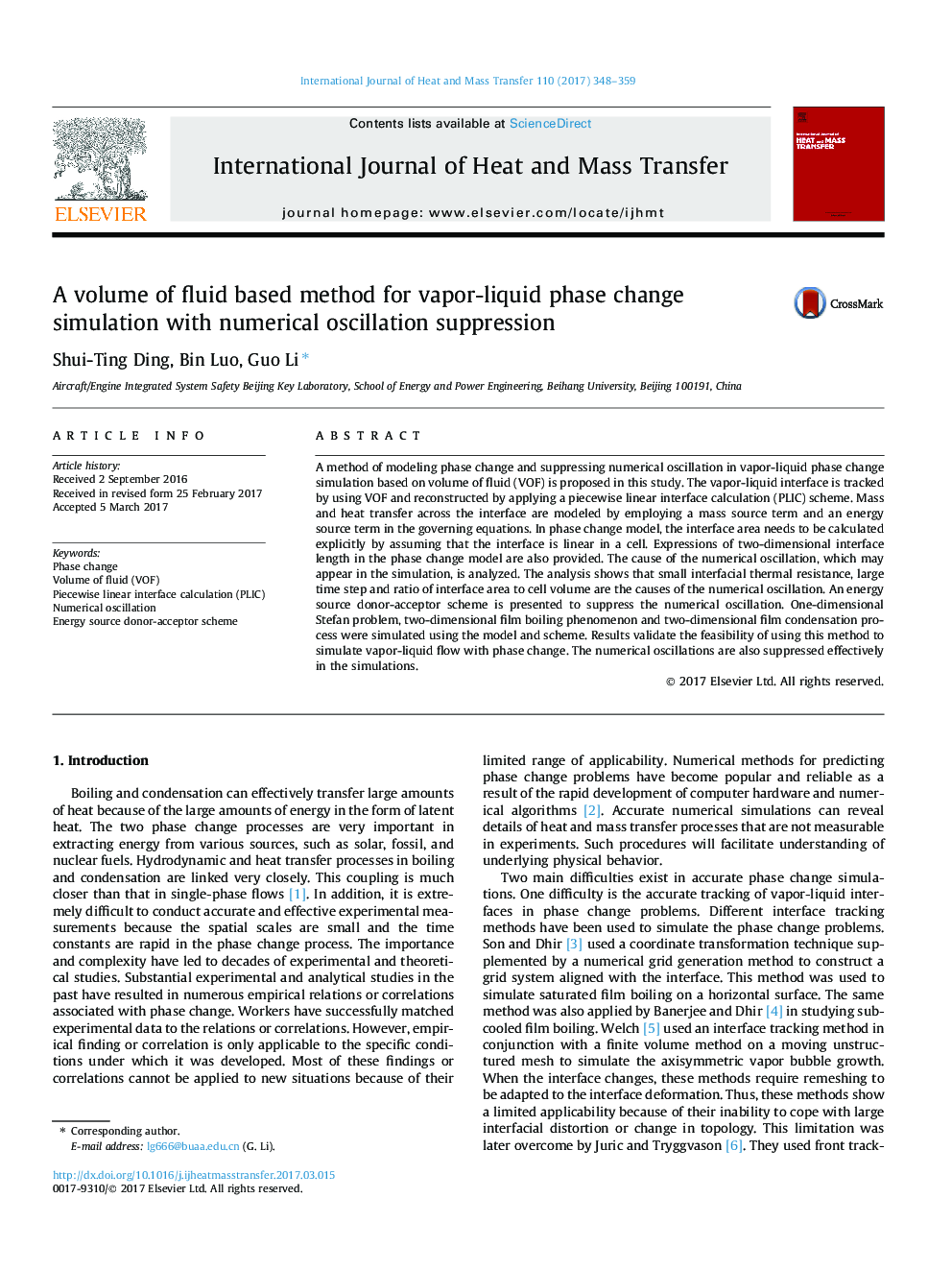| Article ID | Journal | Published Year | Pages | File Type |
|---|---|---|---|---|
| 4993570 | International Journal of Heat and Mass Transfer | 2017 | 12 Pages |
Abstract
A method of modeling phase change and suppressing numerical oscillation in vapor-liquid phase change simulation based on volume of fluid (VOF) is proposed in this study. The vapor-liquid interface is tracked by using VOF and reconstructed by applying a piecewise linear interface calculation (PLIC) scheme. Mass and heat transfer across the interface are modeled by employing a mass source term and an energy source term in the governing equations. In phase change model, the interface area needs to be calculated explicitly by assuming that the interface is linear in a cell. Expressions of two-dimensional interface length in the phase change model are also provided. The cause of the numerical oscillation, which may appear in the simulation, is analyzed. The analysis shows that small interfacial thermal resistance, large time step and ratio of interface area to cell volume are the causes of the numerical oscillation. An energy source donor-acceptor scheme is presented to suppress the numerical oscillation. One-dimensional Stefan problem, two-dimensional film boiling phenomenon and two-dimensional film condensation process were simulated using the model and scheme. Results validate the feasibility of using this method to simulate vapor-liquid flow with phase change. The numerical oscillations are also suppressed effectively in the simulations.
Related Topics
Physical Sciences and Engineering
Chemical Engineering
Fluid Flow and Transfer Processes
Authors
Shui-Ting Ding, Bin Luo, Guo Li,
